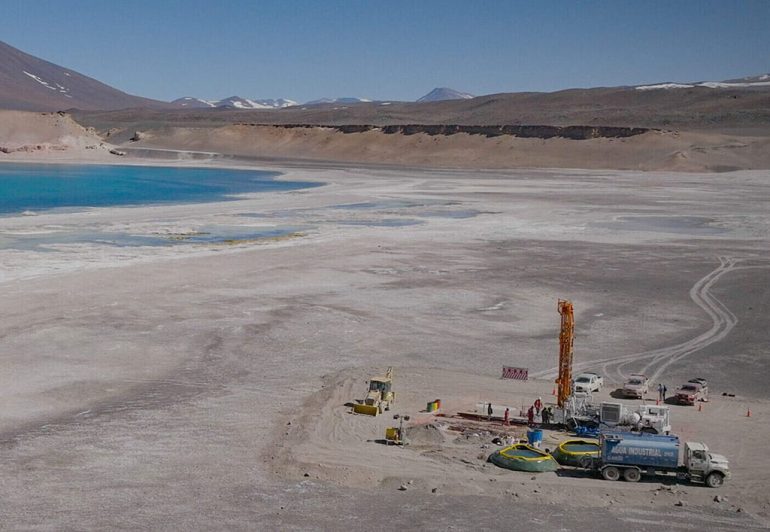
The race to revolutionize lithium extraction for electric vehicle (EV) batteries is heating up, attracting a diverse range of participants such as oil producers, tech startups, and established mining giants. These players are vying to be at the forefront of reshaping the production of this crucial metal, essential for the global transition to green energy.
Direct lithium extraction (DLE) technologies are on the verge of tapping into saltwater brine deposits found across Europe, Asia, North America, and other regions. According to estimates by the U.S. Geological Survey, these deposits hold roughly 70% of the world’s lithium reserves. The emergence of successful DLE companies is set to revolutionize the industry by supplying lithium for EV batteries in a matter of hours or days, a stark contrast to the months or longer required by existing large-scale evaporation ponds and open-pit mines, which are water-intensive.
Also, don’t forget that you can get discounted new car pricing with a free quote through qualified local dealer partners.
Ken Hoffman, co-head of the EV Battery Materials Research group at McKinsey & Co., emphasizes the significance of DLE in meeting the global need for abundant and low-cost lithium to facilitate the energy transition. This sentiment was echoed by Chilean President Gabriel Boric, who drew international attention to the sector by outlining a plan to phase out evaporation ponds and adopt DLE technology in his country’s vast lithium reserves.
Several companies are poised to become early leaders in commercial DLE projects over the next 12 to 18 months. EnergySource Minerals, International Battery Metals (IBAT), oilfield service provider SLB, and mining giant Rio Tinto are among the frontrunners. Eramet and Sunresin are also seen as potential winners in this emerging field.
DLE technologies, similar to household water softeners, aim to extract at least 90% of the lithium from brines, a significant improvement over the approximately 50% achieved through evaporation ponds. This enhanced efficiency has captured the attention of both lithium industry customers and investors, who anticipate that DLE will reduce production costs and make previously uneconomical resources viable.
Portable DLE technologies capable of recycling a substantial amount of fresh water and minimizing hydrochloric acid usage are particularly appealing. Projections by Fastmarkets indicate that by 2030, 13% of the world’s lithium will be produced using DLE methods.
Drawing a parallel to the U.S. fracking industry, DLE is considered a potential swing producer in the lithium market. It can quickly respond to changes in demand, providing flexibility in supply. With global lithium consumption projected to increase nearly fourfold by the end of this decade, DLE is seen as a crucial source of additional supply.
One notable example of DLE progress can be found in a rural Louisiana workyard, where IBAT has constructed an automated DLE plant. IBAT’s plant, designed for easy transportation and assembly, has the capacity to filter 5,000 metric tons of lithium annually. The company aims to be the first to market and anticipates commercial lithium production by December. Other companies, such as Exxon Mobil, Chevron, EnergySource Minerals, and SLB, have engaged in discussions regarding licensing DLE technology and implementing it in their operations.
For oil producers, DLE offers an enticing opportunity to extract lithium from water that is already obtained alongside hydrocarbon extraction, potentially turning a cost center into a profit generator. SLB, a major oilfield services provider, is expanding into the lithium sector and plans to commence operations early next year using DLE technology developed by EnergySource Minerals and incorporating water treatment equipment from other sources.
However, established mining giants like Rio Tinto are not ceding ground to new entrants and have also made substantial investments in DLE projects. For instance, Rio Tinto acquired a DLE project in Argentina and expects to begin production next year, with an annual output target of 3,000 metric tons.
Despite the progress, DLE has faced some skepticism. Short-sellers criticized processes developed by Standard Lithium and Lilac Solutions last year, but both companies refuted the claims. Standard recently signed an agreement with Koch Industries to deploy DLE technology in Arkansas, while Lilac, backed by BMW and Breakthrough Energy Ventures, reported successful production at a lithium pilot plant in Argentina.
DLE technologies must be tailored to the unique chemical compositions of each brine deposit, as various locations have different concentrations of minerals like magnesium and potassium. This individualization poses a challenge for the emergence of a universal DLE technology.
Stellantis, General Motors, and other companies have invested significant amounts in DLE firms, driven by their aggressive timelines to launch electric fleets. The urgency is clear, as Chris Doornbos, CEO of E3 Lithium, stressed the need to commercialize DLE projects promptly.
The race to remake lithium extraction for EV batteries has attracted a wide range of participants, from startups to established industry players. Their efforts to develop and commercialize DLE technologies hold immense potential for transforming the lithium industry and meeting the growing global demand for lithium-ion batteries.
Source: Reuters